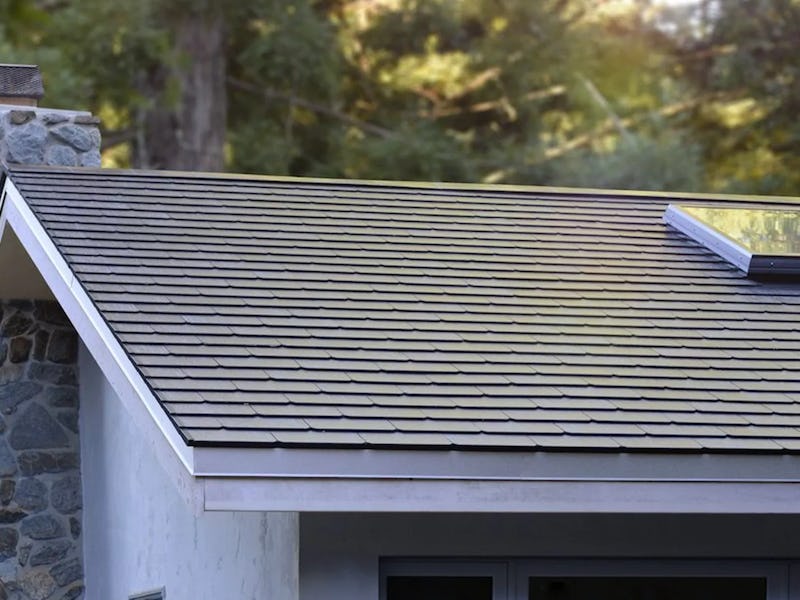Tesla Solar Roof: Elon Musk Reveals Version 3 Production Will Speed Up Soon
The new upgrades could make it a more tantalizing prospect.

Tesla has developed a third version of its solar energy-harvesting roof tiles, CEO Elon Musk revealed at an event Monday. The company’s clean energy product has made big headlines since limited installations first started over a year ago, and Musk’s latest comments suggest Tesla will start shipping tweaked versions of these tiles to more customers.
“We’re now on version three of the solar tile roof, and we expect to spool up production of the solar tile roof significantly later this year,” Musk said at the Autonomy Investor Day hosted at its headquarters in Palo Alto, California. “I have it on my house and it’s great.”
While the event was largely focused on the firm’s autonomous car technology, Musk listed the solar roof as an example of how Tesla makes big promises and eventually delivers, even if the timescale is a little inaccurate. Musk demonstrated the solar roof as part of his “house of the future” vision in November 2016, with tiles that blend in to make it look like an ordinary roof, filling up a Powerwall battery that supplies consistent power to the house and a Tesla Model 3 in the garage at all times of day.
Tesla may have revealed these “version three” changes in its January letter to investors. The company stated it would use “significantly improved manufacturing capabilities” to “ramp up” production “based on the design iterations and testing underway.” The company also stated it would continue installations at a slow pace to “gather further learnings from our design changes” and “about the viability of our installation processes by implementing them in areas around the U.S. that are experiencing inclement weather.”
The Tesla solar roof
Musk declared in March at the Model Y SUV launch event that 2019 is “definitely going to be the year of the Solar Roof and Powerwall,” adding that “because of the extreme challenges with the Model 3 production, we had to basically allocate all resources to Model 3 production because otherwise, we were going to die.” The company’s cheapest-ever electric vehicle faced “production hell” as it worked to boost the limited manufacturing run at the car’s July 2017 launch to reach 5,000 cars per week just 12 months later, around five times more cars per week than the Model S.
The turnaround would make a big change from the limited production rates seen so far. Musk announced in August 2017 that both him and Jeffrey B. Straubel, the company’s chief technology officer, had installed the tiles on their roofs. While a few buyers like Amanda Tobler and Tri Huynh took deliveries in early 2018, a Reuters report claimed the firm had installed just 12 roofs by May of that year.
Durability is a key element of the roof. Tesla offers an “infinity” warranty on the tiles themselves and a 30-year warranty on the electrical aspects of the product. All four styles of tile use a tempered glass three times stronger than slate or asphalt.
Tesla's solar roof tile animation.
Although not all tiles are created equal — Tobler told Inverse the non-solar dummy tiles are weaker so they can be cut to size — their strength is a key selling point that makes them a more attractive prospect to buyers looking to replace their roof, anyway.
Tesla recommends a 35 percent mix of solar tiles at $42 per square foot versus 65 percent non-solar tiles at $11 per square foot, resulting in a price of $21.85 per square foot for the tiles. Tobler’s 2,000-square-foot roof cost $50,000 and generates 9.85 kilowatts, feeding one Powerwall battery. It’s an attractive prospect, particularly for new home builders, but the lack of availability makes planning with the roof in mind difficult.
With Tesla also initially focusing on the textured and smooth styles, leaving Tuscan and Slate to the wayside, there’s a number of ways the firm can improve its solar roof output for the coming year.